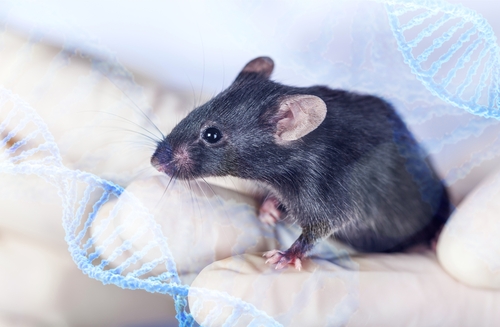Deleting Mss51 Gene Reduces Fatigue, Increases Endurance in DMD Mice

By deleting the Mss51 gene, scientists were able to reduce fatigue, increase endurance, and ease mitochondrial impairment in a mouse model of Duchenne muscular dystrophy (DMD).
Mss51 is a gene that provides instructions to make a skeletal muscle protein specifically found in mitochondria, the small cell compartments responsible for energy production.
Despite the benefits shown in these DMD mice, however, the genetic deletion of Mss51 failed to improve the animals’ limb muscle strength — suggesting that this gene alone may be insufficient to induce potential therapeutic benefits.
These findings were reported in “Mss51 deletion increases endurance and ameliorates histopathology in the mdx mouse model of Duchenne muscular dystrophy,” a study published in The FASEB Journal. The study was led by scientists at the Johns Hopkins School of Medicine and the Kennedy Krieger Institute, both in Baltimore.
DMD is a type of muscular dystrophy caused by mutations in the DMD gene, which provides instructions for the production of a protein called dystrophin. This protein is needed to strengthen and stabilize muscle fibers, preventing them from being damaged while muscles contract and relax.
However, in people with DMD, dystrophin is either absent or malfunctions, causing their muscles to become increasingly weakened and impaired.
Several studies proposed that mitochondrial impairment in skeletal muscle tissues is one of the key contributors to DMD, and may even be one of the earliest signs of the disease. In the mdx mouse model, a well-established DMD animal model, disruptions in energy metabolism and other mitochondrial defects have already been reported, backing up this idea.
“Therefore, identifying ways to stabilize mitochondrial function is anticipated to improve skeletal muscle function and repair in the absence of dystrophin,” the researchers wrote.
In a previous study, the same group of researchers discovered that by deleting Mss51 — a gene that encodes a skeletal muscle protein that specifically localizes to mitochondria — in healthy (wild-type) mice, the animals’ endurance, muscle strength, and muscle oxygen consumption increased.
Muscle oxygen consumption is an indicator of mitochondria metabolism in muscle tissues; high oxygen consumption rates indicate that mitochondria are generating large amounts of energy via their respiratory chain, which is then used by muscle cells as fuel.
“These findings suggest that Mss51 deletion modulates skeletal muscle mitochondrial respiration, which might positively mend overall mdx disease pathology [mechanisms],” the scientists wrote.
To explore this possibility, the investigators examined the structure of muscle fibers, evaluated muscle function and strength, and measured muscle oxygen consumption in mdx mice that also lacked a functional Mss51 gene (mdx‐Mss51 KO mice).
They found that, compared with mdx mice that had a functional Mss51 gene, animals with no Mss51 had higher muscle oxygen consumption rates. Additionally, their muscle fibers had a more normal appearance and showed fewer signs of tissue scarring (fibrosis) than the mdx mice that had the Mss51 gene.
Animals lacking Mss51 also had higher endurance while running on a treadmill and showed fewer signs of muscle fatigue, compared with mdx mice.
However, the researchers found no significant differences between the two groups regarding limb muscle strength and the ability to produce force.
“These findings suggest that although Mss51 deletion ameliorates the skeletal muscle mitochondrial respiration defects in mdx and improves fatigue resistance in vivo [in the body], the lack of improvement in force production suggests that this target alone may be insufficient for a therapeutic effect,” the investigators wrote.






